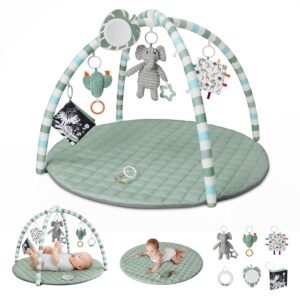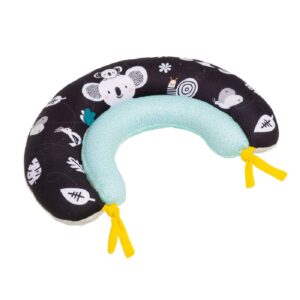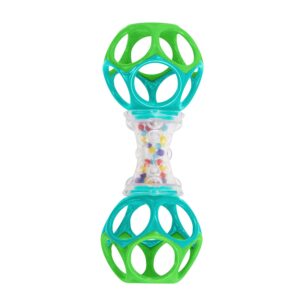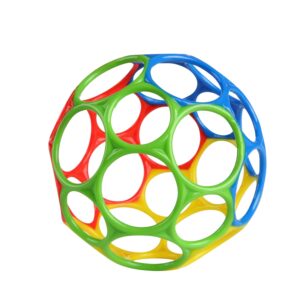If you had a baby recently, then you have probably heard the term tummy time for newborns numerous times. But what is tummy time exactly? Why everyone, from the parental blog to your pediatrician, is talking about it? Let’s discuss everything in detail.
Tummy time isn’t only a cute moment when your baby lies on their tummy. It’s a crucial thing in a baby’s development and growth. Tummy time helps your baby to build the muscles your baby needs to lift their head, roll over, and eventually walk.
Let’s break down the things you need to know about tummy time for newborns, including when to start, how to do it safely, and most importantly how to make it fun for both of you.
What is Tummy Time?
Tummy time is an activity of placing your baby on their tummy when they are awake in your presence and supervision. It allows them to push up their arms, lift their head, and strengthen their back, shoulders, and neck.
This simple activity helps your baby to strengthen their body to walk soon and plays a huge role in preventing flat head syndrome (positional plagiocephaly), which can occur if a baby spends too much time lying on their back.
Read about: Sleep Training Tips Every New Parent Should Know
When to Start Tummy Time?

This question arises in the heads of many parents. The answer is very simple, and it says, “right away”. You can begin newborn tummy time as early as the first week; even after coming home from the hospital.
In the first week, your infant may only tolerate a few minutes lying on their belly, but that’s perfectly fine. Increase the time gradually to long sessions and be consistent to get better results.
Tummy Time Timeline:
| Baby’s Age | Tummy Time Duration |
| Newborn (0–1 month) | 1–2 minutes, 2–3 times/day |
| 2 months | 5–10 minutes, several times/days |
| 3–4 months | Up to 30–60 minutes/day (total) |
Importance of Tummy time:
If you are still wondering, why this simple exercise matters? Here are some key benefits of tummy time:
- Supports gross motor development (like crawling and rolling)
- Improves posture and coordination.
- Strengthen core muscles (neck, back, and shoulders).
- Reduces the risk of a flat spot on the head.
- Helps with focus and visual tracking.
Over time, babies who get regular tummy time often show earlier and stronger motor skills, giving them a healthy start on physical development.
Tummy time vs Sleeping on the Tummy:
There is an important difference between tummy time and sleeping on the tummy. Most parents confuse both.
Tummy time: Done when baby is awake and supervised.
Sleeping on the tummy: Not recommended for sleep due to the risk of SIDS (sudden infant death syndrome).
The benefits of a baby sleeping on a tummy might seem similar (less fussiness, better head shaping), but always follow sleep guidelines. Never let your baby sleep on the stomach and allow lying on the tummy only when awake.
When is the Best Time for Tummy Time?
Parents often have a question: Should I do tummy time before or after feeding?
Don’t ever lay your baby right after feeding. It can lead to various problems like spit up or vomiting. The best time is usually 30-45 minutes after feeding when your baby has had enough time to digest the food.
Tip: Make sure your baby is calm, alert, and not too hungry or too full, that’s the key point for tummy time success.
Right Way to do Tummy Time:

Now let’s get into how to do tummy time safely and effectively. It’s simple, but a few useful tips can make a difference.
- Place a soft mat or blanket on a clean, flat surface.
- Gently place baby on their tummy, facing sideways or forward.
- Stay close and supervise at all times.
- Make eye contact, talk, or use toys to engage them.
Tummy Times Safe Positions to Try

If your baby is still floppy and young, here are some safe tummy time positions for newborns:
- Lap time: Lay the baby on your lap on their tummy and gently caress their back.
- Chest-to-chest: Put your baby on your chest while reclining.
- Football hold: Hold baby face down along your forearm for a change of view.
These positions provide a change from regular tummy time positions and make it more engaging and fun.
What if the Baby Still Hates Tummy Time?
Some babies may resist tummy time after your efforts to make it enjoyable. Don’t worry it’s normal. Try these things if your little one still hates it:
- Try tummy time on a changing pad or bed
- Use skin-to-skin contact for comfort.
- Break into shorter and more frequent sessions.
- Hold them in upright carriers to build similar muscles.
Don’t forget to remain consistent. Even 1-2 minutes a day can do a lot.
Read more: How to Boost Your Child’s Immune System Naturally
Frequently Asked Questions:
1: Can tummy time cause gas and reflux?
It can cause discomfort if your baby has just eaten. Better to wait 35-40 minutes after feeding. If reflux is getting more frequent and severe, talk to your pediatrician for tailored guidance.
2: What if my baby has a flat head already?
Regular tummy time can help reduce already flat heads and support head shape correction. If you have any further concerns, discuss them with your doctor because early intervention helps.
3: Are there any products that make tummy time easier?
Yes. Soft tummy time mats, baby-safe mirrors, textured toys, and tummy time pillows can help make the experience more enjoyable and supportive.
4: Can I do tummy night at night?
Avoid doing it at night before bed or when your baby is overly tired or sleepy. It could be unsafe or frustrating. Tummy time should only be done if your baby is wide awake and alert.
5: Is tummy time still needed if I babywear a lot?
Babywearing can help strengthen muscles but tummy time targets different areas like:
- Lifting head while in bed
- Push-ups on forearms.
- He holds his head up and looks around steadily.
- Rolls from belly to back.
Both are beneficial, but don’t skip tummy time just because you use a carrier.
Tummy time is one of the best things you can do to support your baby’s physical growth and confidence. It may start with a few fussy moments, but it quickly becomes a powerful part of their daily routine.
So, roll out a mat, grab a soft toy, and make it a moment of connection. Before you know it, your baby will be pushing up, rolling over, and showing you just how strong they are.
Here are some tummy time essentials:
Soft Tummy Time Play Mats: Padded, non-toxic, and safe for daily floor time.
Tummy Time Water Mats: Colorful floating shapes encourage movement and curiosity.
Tummy Time Pillows or Rollers: Gently props baby up to support early head lifting.
Mirror Toys for Infants: Babies love looking at their reflection, which encourages head lifting.
Tummy Time Toy Bars or Arches: Hang soft toys just within reach to promote stretching and reaching.
Rattle Toys with Easy Grip: Help babies learn to reach and grasp during tummy time.
Rolling Toys or Crawl Balls: Encourage babies to push up and chase as they grow stronger.
Light-Up or Musical Tummy Toys: Encourage movement and make sessions more exciting.
Non-Slip Baby Socks or Booties: Provide gentle grip as babies begin to scoot or move.
The more engaging you make it, the longer your baby will tolerate it. Your baby may find it fun and become eager for tummy time.











Add Comment